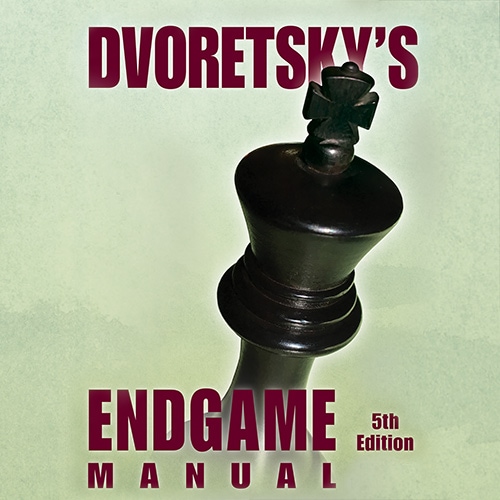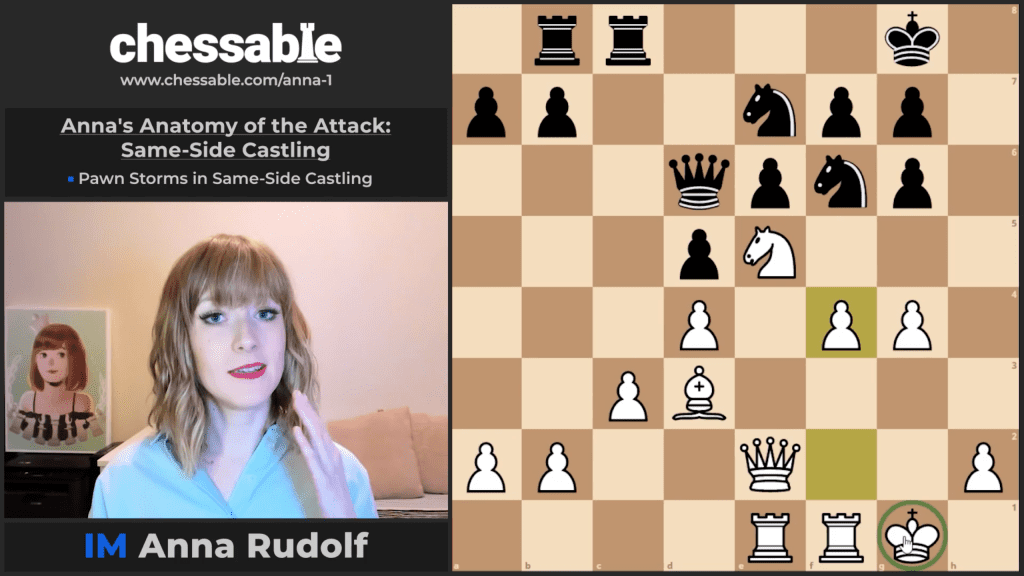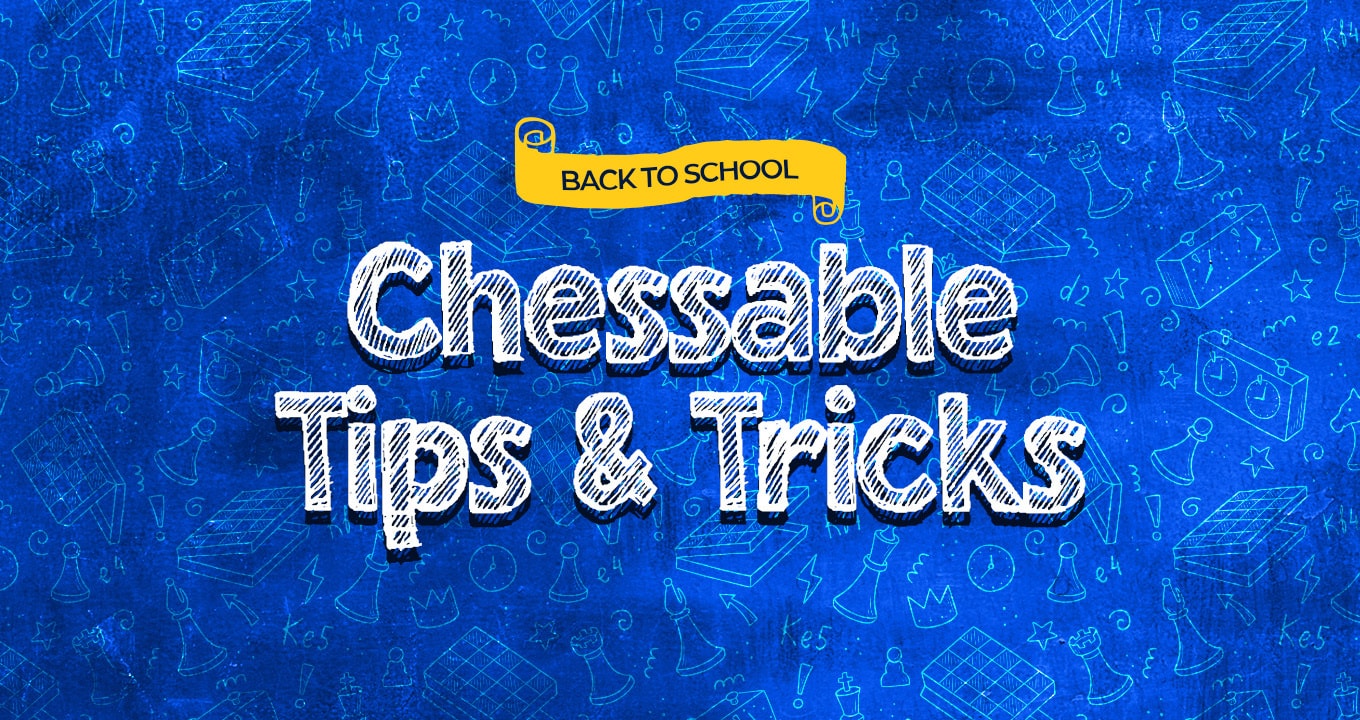Tips for attacking the castled king
If you want to improve at chess it is important to increase your winning attack potential – and the art of attacking the castled king is one of the most important aspects of all.
When teaching the basics of chess, we advise students to castle as early as they can; certainly within the first 10 moves. It is a natural way to make the king safer. We tell the students: if we castle and our opponent doesn’t, their king will be easier to attack and there will be more opportunities to play for a checkmate.
Both Kings Have Castled
What if both kings have castled? How can we then create checkmating plans when the opponent’s king is as safe as ours after the first few opening moves?
There are numerous approaches to take and today we will examine an example taken from Anna Rudolf’s new Chessable course, Anna’s Anatomy of The Attack.
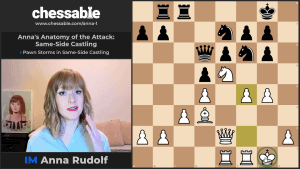 The course is ideal for players who are looking to increase their knowledge of standard attacking plans, offering a systematic, step-by-step approach from first taking the initiative all the way through to the dénouement.
The course is ideal for players who are looking to increase their knowledge of standard attacking plans, offering a systematic, step-by-step approach from first taking the initiative all the way through to the dénouement.
Pawn Storms
One way to start an attack on the opponent’s castled king is to castle on the opposite side of the board and use the pawns as battering rams, marching down the board towards the opponent’s castled position. The advancing pawns can be happily sacrificed to open up more attacking lines for the other pieces.
Such pawn storms are a common attacking tool and dramatic games occur when both sides are racing each other on opposite sides of the board.
Castling on the Same Side
However, when both players castle on the same side of the board there is a reluctance to start a pawn storm as advancing the defensive wall usually runs the significant risk of weakening one’s own king.
Yet given certain conditions such a method of attacking the castled king can still prove to be a very potent weapon, such as in the following example.
Learn From the World Champion’s Attacking Skill
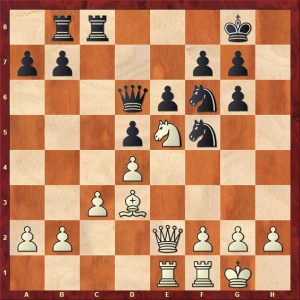
Magnus Carlsen vs. Vladimir Belov
World Blitz Championship 2019
The kings are both on the kingside but that doesn’t deter the World Champion from starting a kingside pawn storm.
20 g4! Ne7 21 f4!
How can we judge when it is a correct method of attack, with minimal risk to our own king?
Over to Anna for the explanation:
‘What makes Magnus’s pawn storm work in this position? A really important factor is that the centre is fixed and closed, and there aren’t any open files on the Queenside either. With Black not being able to get to the white King, the weakened castle of White cannot be taken advantage of – but what can be taken of advantage of is how useful these pawn pushes will be in gaining access to the black King!’
Seeking Counterplay
Belov obeys the old rule about ‘not meeting pawn storms with pawns’ and seeks counterplay on the queenside, utilizing the minority attack (a subject we shall return to in a future post.)
21 …a6
22 Qg2 b5
23 f5!
Some players may have become concerned by Black’s queenside action and would now have taken steps to slow down any potential counterplay, but it is not so easy to distract Magnus Carlsen from his plans – especially when he is attacking the king.
23 …exf5
24 gxf5 Nxf5
25 Bxf5 gxf5
26 Rxf5 b4
Attack or Defend?
Back to Anna to shed some light on the current position:
‘Black is trying to create counterplay on the Queenside. Would you react to the pawn push …b4 or continue the attack on the Kingside? What’s your choice of move to play?’
27 Ref1!
‘You should always take into account the opponent’s play and counter chances, but a quick analysis of the Queenside situation will reveal that Black’s attack isn’t dangerous at all – you can focus on the Kingside fully!’
27 …Kf8
Pushing Home the Attack
Black ‘Steps out of the immediate loss of material — but cannot hide from White’s attack. What’s next, how to increase the pressure?’
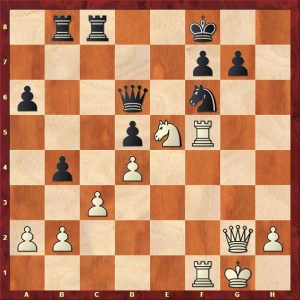
28 Rg5!
‘Simple chess! Remember that unless the position requires it, you don’t need to go for flashy, sacrificial lines. Being pragmatic in chess and going for variations that you can calculate with confidence and clarity can give you better results than wanting to win the Beauty Prize with every game.’
Indeed, most club and tournament players will never be able to play for a Beauty Prize and practicality will always bring more points than attempts at creating brilliancies.
28 …bxc3
29 Rxg7 cxb2
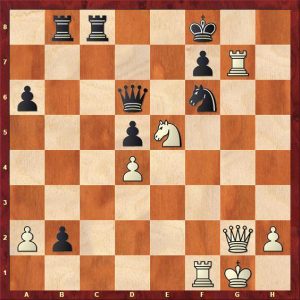
30 Rxf7+Ke8 31 Qg6 and Black resigned (1-0), due to the impending checkmate.
Anna’s Anatomy of The Attack is full of such instructive examples, presented in a very engaging style. It can be recommended to players who would like to increase their potential for attacking the castled king. Students will feel the benefit when the attacks are turned into points on the tournament table, with the added advantage (at least in this case) that they can say they ‘learned the attack from Magnus Carlsen’!
Strategic Play and Attacking Skill
In fact as strategic play and attacking skill are strongly connected, why not combine your study of Anna’s material with The Magnus Touch – Strategy, our highly anticipated course which is due for imminent release.
First coverage of the new course was given here last week and we even offered a free lesson as a teaser to the excellent material to come.
Stay tuned as the course will be available very soon!
